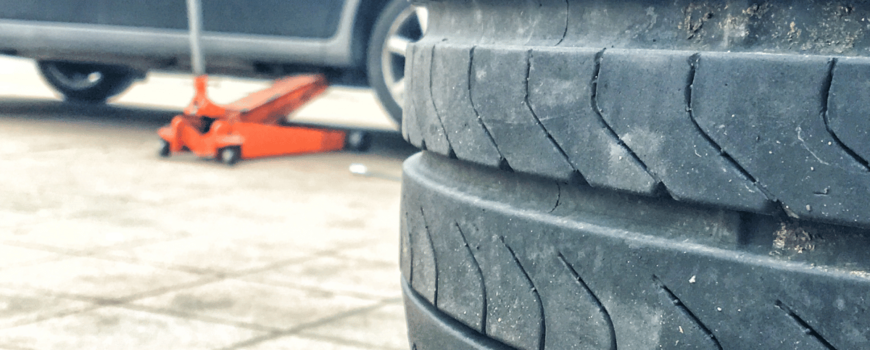Assume you’re driving down the road on a sunny day when you hear a loud thump followed by an unsteady sensation in your automobile. The all-too-common flat tire. While we’d all like to avoid it, understanding how to replace a car tire is a vital skill that every motorist should have. Fortunately, changing a tire isn’t as difficult as it may appear, and with a few easy suggestions and some basic equipment, you’ll be back on the road in no time.
This article will lead you through the process of replacing an automobile tire step by step. Whether you’re a seasoned or inexperienced driver, these pointers will help you face this common road hazard with confidence.
Safety First
Before you even consider replacing a tire, be sure you and others are safe. What you should do is as follows:
a. Pull over to a safe location: If you discover a flat tire, slow down gently and choose a level, well-lit site away from traffic. Stopping on a curve or in a blind zone should be avoided.
b. Turn on your hazard lights: Turn on your hazard lights to inform other drivers that you have a problem.
c. Engage the parking brake: Engage the parking brake to keep your vehicle motionless.
d. Gather your materials: Take your spare tire, jack, lug wrench, and any other equipment you need from the trunk or designated storage place of your car.
Locate the Spare Tire and Jack
A spare tire and a jack are usually housed in the trunk or beneath the rear cargo compartment of most automobiles. Consult your owner’s handbook for precise locations, since they vary by make and model. Take them out and lay them beside the flat tire after you’ve located them.
Loosen the Lug Nuts
While the automobile is still on the ground, loosen the lug nuts slightly before raising it with the jack. Use the lug wrench to turn each lug nut counterclockwise just a quarter or half a turn. This will make it easier to fully remove them later when the car is elevated.
Position the Jack
Proper positioning of the jack is crucial to ensure your safety and prevent damage to the vehicle. Consult your owner’s manual for the correct lifting points on your car. Generally, these points are marked with a notch or symbol. Place the jack in the correct position, ensuring it makes secure contact with the car’s frame.
Lift the Car
Using the jack handle, begin raising the car slowly. Keep a close eye on the car as it lifts to ensure it stays level and stable. Continue raising the car until the flat tire is approximately six inches off the ground. Do not put any part of your body under the car while lifting it.
Remove the Lug Nuts and Flat Tire
Now that the car is safely elevated, you can fully remove the loosened lug nuts with the lug wrench. Be sure to keep them in a safe place, as you’ll need them to secure the spare tire later. Once the lug nuts are off, carefully slide the flat tire out from the wheel hub and set it aside.
Install the Spare Tire
Position the spare tire onto the wheel hub and align the holes in the rim with the wheel bolts. Push the spare tire onto the hub as far as it will go. Then, thread the lug nuts onto the wheel bolts by hand. This ensures that you don’t cross-thread them, which could cause damage.
Hand-Tighten the Lug Nuts
Use your fingers to tighten the lug nuts as much as you can while the car is still suspended in the air. This will help center the spare tire on the hub.
Lower the Car
Using the jack, carefully lower the car until it rests on the ground. Make sure it’s stable before proceeding.
Tighten the Lug Nuts
Now that the car is on the ground, use the lug wrench to securely tighten the lug nuts. Begin by tightening one lug nut in a star or crisscross design. This keeps the spare tire evenly situated on the wheel hub. Tighten each lug nut as much as possible, but be careful not to overtighten, since this might deform the brake rotor or damage the wheel studs.
Double-Check and Replace the Tools
Verify that all of the lug nuts are properly tightened by walking around the wheel. Then, return your flat tire, jack, lug wrench, and other items to their proper places in the car.
Check the Spare Tire Pressure
Before you start driving, make sure the spare tire is filled to the correct pressure. Usually, the recommended pressure is stated in the owner’s handbook for your automobile or on the sidewall of the tire. An under-inflated spare tire might endanger the stability and safety of your car.
Explore – Tyre Lever From Truck
Conclusion
Changing a car tire at first could seem intimidating, but with the correct knowledge and some experience, it becomes a straightforward process. Always put safety first by coming to a halt in a well-lit place, obeying this advice, and putting on your warning lights.
By becoming an expert at changing a car tire, you can avoid lengthy waits for roadside assistance and make sure you’re prepared to handle unexpected flat tires with confidence. It’s a skill that every driver should possess, and with five simple tips, you’re well on your way to mastering it.

